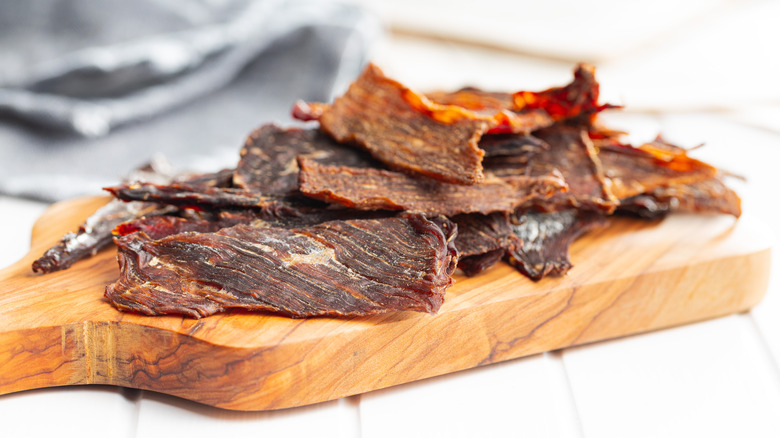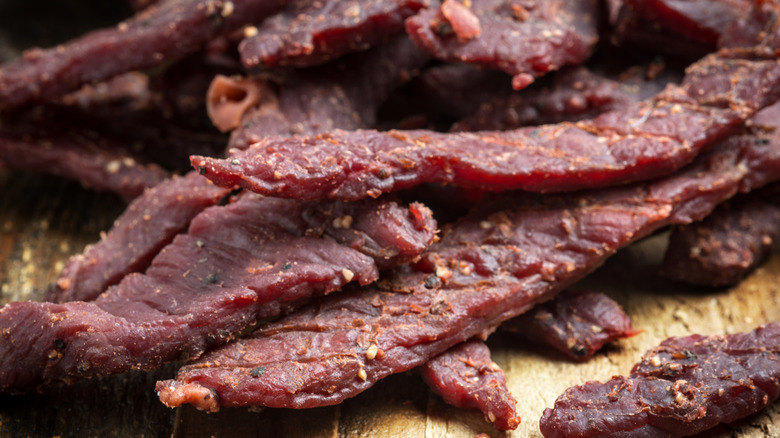Here's How Long Beef Jerky Should Last After Opening
Because beef jerky is a tasty, protein-packed treat, maintaining a continuous supply in your pantry is always a good idea. However, knowing what to do with leftover beef jerky can be a bit of a conundrum, as you're unlikely to devour an entire bag in one sitting. This snack is certainly not cheap, and there's even a scientific reason that explains why beef jerky is so expensive. Accordingly, you probably want to know just how long that opened bag will last before it must be discarded.
Opened bags typically have a lifespan of about three days when no special storage steps are taken. If you store an opened bag in the refrigerator correctly, that timeline can be extended to approximately three weeks, which gives you ample time to enjoy the leftovers. In addition to containing marinades and spices, beef jerky is also dehydrated after it's cooked, which helps boost its longevity. That doesn't mean the food will last forever, as jerky can fall victim to spoilage. Spoilage is especially concerning when the proper storage practices are neglected.
Best practices for storing leftover beef jerky
The longevity of your opened bag of jerky all depends on how you store the product. The first order of business is to relocate the food from its original packaging to a sealable bag or container, which will safeguard it against spoilage. Next, you'll need to select a storage area offering optimal conditions. At a minimum, ideal storage areas will range from 40 degrees to 70 degrees Fahrenheit and be protected from moisture.
While these conditions are beneficial for deterring spoilage, refrigerating opened jerky can extend the lifespan of the product. In fact, some brands feature label instructions that call for refrigeration once you've broken into a bag. In this case, seal the remainder in your refrigerator-safe container or bag and place it into cold storage. Keep in mind that while it's possible to freeze jerky to extend its lifespan even further, it's not recommended due to the loss of quality that can occur. And diminished flavor and texture are the last things you want when preserving one of the best brands of beef jerky on the market.
How to tell whether your jerky has gone bad
Proper storage of beef jerky increases its longevity by protecting the food against environmental factors that facilitate spoilage. Microbes that spoil food need air and moisture to thrive, which is why limiting these conditions is important to keeping food tasty and free of bacteria and other germs. Food poisoning is associated with lots of unpleasant facts and can cause major health problems in some instances, so you want to do everything you can to avoid it.
In addition to using the best storage practices to keep your beef jerky safe and palatable, you should also be aware of the common signs of spoilage. In many cases, you can spot bad jerky simply by looking at it, as the food will appear discolored or exhibit signs of mold growth (such as green or white spots with fuzzy textures). Smell is another crucial factor to consider, as bad beef jerky can give off an acrid aroma when the bag or container is opened. Spoiled jerky may also feel overly hard or even brittle. While spoilage can't be avoided forever, proper beef jerky storage can delay the inevitable for a few weeks.


